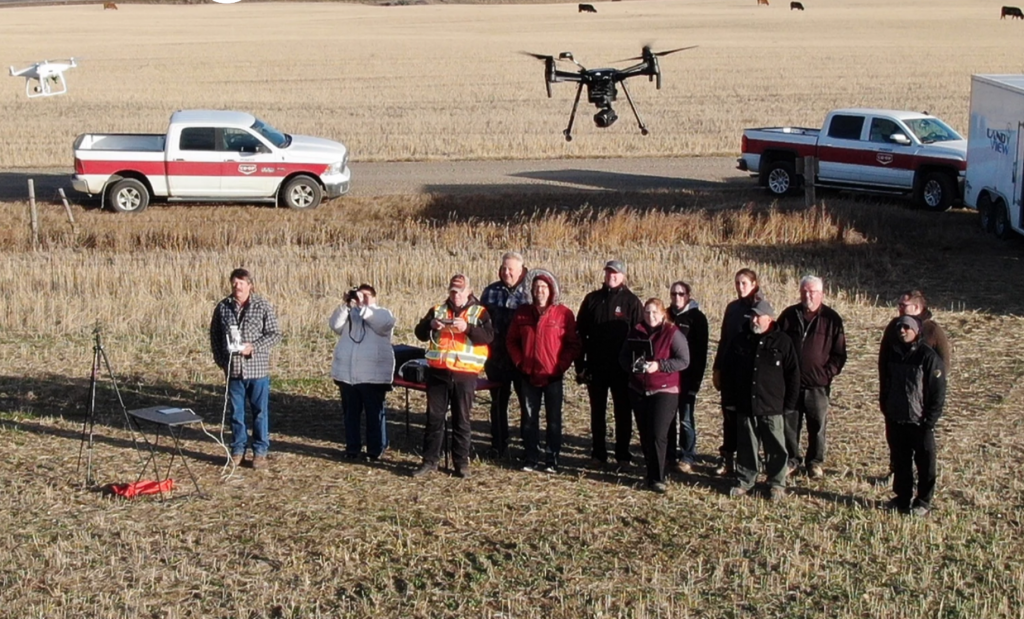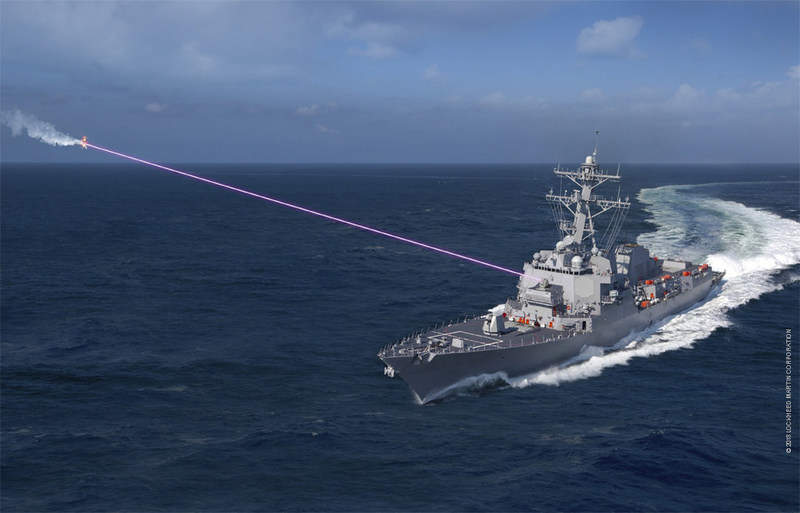Site blog

Drone manufacturers around the world are struggling to meet production schedules as the coronavirus continues to impact Chinese manufacturing systems.
U.S.-based Skydio assembles drones in the U.S.: but the company is suffering from the supply-chain disruption caused by the slowdown in manufacturing of the component parts. Advance customers of the sought-after Skydio Beacon received an email stating that Skydio had sold out of Beacons in stock and were working to get product back on the shelves. “…a growing number of component suppliers around the world are experiencing slowdowns or shut-downs in reaction to the COVID-19 virus, which impacts the availability of subcomponents in a snowball effect,” says the email.
DJI, the largest drone manufacturer in the world, is working to limit the impact on customers: but says that shortages may occur. “There may be some disruptions in the supply chain of raw materials that could lead to delays in shipment. While this is outside our control, we will continue to monitor the situation closely and adapt to developments accordingly,” a DJI spokesperson told Commercial Drone Professional.
Blame the new coronavirus strain, not the manufacturers. Since the outbreak, China has done what the World Health Organization has called “the most ambitious, agile, and aggressive disease containment effort in history.” That containment effort led to the lockdown of Wuhan and nearby cities in Hubei province. At least 50 million – yes, million – people have been under a mandatory quarantine since January 23, 2020. Additionally, the Chinese government has been educating the populace and asking them to adopt “social distancing” measures. That means the cancellation of business meetings and conferences, and means taking special measures on all aspects of manufacturing. Manufacturers are placed in the situation of honoring not only the legal obligations to limit possible contagion, but their responsibility to their staff and supply chain. The world’s largest manufacturing center has been severely crippled – and every battery, gimbal, prop, camera, or small piece of plastic manufactured in China has become harder to get.
These extreme measures may be beginning to ease. China’s efforts to control the outbreak have been, according to world health officials, extremely effective. But even if the disruption proves to have lasted only a couple of months, it may take twice that long for manufacturers to get component stock up to normal levels.
As the drone industry feels the effect of the disruption in manufacturing, they are also working to help solve the problem. DJI has committed funds to the fight against the coronavirus, and has worked with health officials to modify spraying drones to disburse disinfectant. Drones have also been used for delivery of supplies to quarantined areas – a perfect solution for limiting human contact. Drones are proving that they can provide solutions to urgent problems – in the long run, that may help the drone industry more than the manufacturing slow down hurts itPosted By: Miriam McNabb

Baranidharan Raman
Everyone’s familiar with sniffer dogs at airports, but how about bomb-sniffing grasshoppers? It sounds crazy, but that’s the mission researchers at Washington University in Missouri have been working toward. And it’s a whole lot less science-fiction-based than you might think.
Digital Trends first wrote about Washington University’s backpack-wearing cyborg locust project in 2016. At the time, Baranidharan Raman, associate professor of biomedical engineering, described the goal as being a “bridge between neuroscience and engineering.” Back then, the project had just received funding from the Office of Naval Research to make its insect-army dream a reality.
Now, approaching half a decade later, the researchers have written a paper describing their progress that’s currently available on the open-access preprint biology server bioRxiv. Titled “Explosive sensing with insect-based biorobots,” it reveals that the team has demonstrated a “biorobotic chemical-sensing approach where signals from an insect brain are directly utilized to detect and distinguish various explosive chemical vapors.”
In short, they built a “mobile multi-unit electrophysiological recording system” and implanted it, via a minimally invasive surgical approach, into locusts. This allowed them to “tap into the neural signals in a locust brain” so that it would react whenever it was exposed to select explosive chemical species, such as dinitrotoluene (DNT) or trinitrotoluene (TNT). In their paper, the researchers note how target chemical recognition can be achieved within a “few hundred milliseconds of exposure.” It can also distinguish between the different chemical species the locust is programmed to react to.
While the idea of using locusts might seem fanciful, the researchers suggest that there is a good reason for this. Researchers have tried building “electronic noses” for accurate sniff-related tasks. However, these are still quite limited. The concept of a “hybrid bi0electronic solution” is that it takes advantage of the sophisticated olfactory sensors that exist even in creatures as relatively simple as a locust. The end result, the Washington University investigators say, is a “cyborg chemical-sensing” system.
There’s no word on when this system will be rolling out into the real world. But it certainly sounds like progress has been made on the project. And, hey, cyborg insect bomb-detectors is the kind of tech that’s worth waiting for!
By Luke Dormehl
SECURITY AND DRONES!
Lévis, Qc, February 2020 :
Drone Vision International of Lévis, Qc, is pleased to announce to the aeronautical drone community that it has been selected by Correctional Service of Canada to present its drone detection technology in proof of concept possible and adaptable to a challenge named Preventing Contraband Delivery via Air and Ground.
To this end, with the help of its Canadian and French partners, including, among others, the leader in radio frequency detection, CerbAir, Drone Vision International is mandated to present a report which constitutes a first step of a multi-stage program in search of a Canadian solution to a technological challenge formulated by a federal organization of Canada.
Correctional Service of Canada is seeking a Canadian innovative, scalable and cost-effective technology solution to detect, track and prevent the delivery of contraband items to institutions via both drone and fence throw-over. Drone Vision International, a Canadian start-up will present a proof of concept demonstrating the technological and commercial feasibility of its innovative solution.
To follow up on this step, Drone Vision International is eligible to receive another contract to develop and deliver a prototype that meets the expectations of the Correctional Service of Canada. Thanks to the expertise and skills of the Drone Vision International team, a Canadian agency could finally solve a problem that many Canadian citizens are concerned about.
It is with enthusiasm that the team from Lévis, Qc, is considering this challenge!
For more information, please contact Drone Vision International
jac@dronevisioninternational.com

Photo: Contributed
Drone technology is here, and it is helping farms become more efficient.
That’s why Markus Weber was involved in starting an Edmonton-based company called LandView Drones, which also conducts a drone school as part of the business. The company will conduct its Ag Drone School in 19 communities between B.C. and Manitoba this spring, and the first one will take place in Kelowna on Thursday and Friday at Rutland Centennial Hall.
The school allows potential customers to get a feel for drones and their capabilities before they buy the technology.
“They can learn more about it and figure out what would actually serve them well on the farm before they spend the money,” Weber said. “So about 80 per cent of the people who come to the school have never flown a drone before in their life, and they’re kind of there to learn and investigate and eventually make a purchasing decision.”
The course runs from 8:30 a.m. to 4:30 p.m. both days and features a wide variety of topics, from map data processing to best practices to uses for livestock and other farm aspects. It also includes taking the online Transport Canada test that all drone pilots are required to pass if they want to fly a device that weighs more than 250 grams.
Participants will learn the basics of flying a drone on Thursday and then have the opportunity to operate several models outdoors on Friday.
Lunch will be provided both days.
Weber said drones can be particularly useful for farmers in the Okanagan, as they can map fields and fly over them to see how their crops are faring. The devices save serious time and money.
“Any vascular plant will give you a different reflectance using near infrared, so it isn’t specific to the plant,” Weber said. “So things like vineyards and orchards are ideal scenarios for drones.
“Anything where there’s a high-grossing crop where you’re making more money per acre, it’s worth it to do more monitoring and really protect that crop well.”
More information about this week’s Ag Drone School can be found here.
Kirk Penton - Mar 03, 2020 - Biz Releases
The U.S. Navy has deployed a warship armed with its first laser weapon defense system capable of blinding and distracting enemy drones.
Naval Sea Systems Command (NAVSEA) said in a Feb. 20 report that the Navy’s Optical Dazzling Interdictor, or ODIN laser weapon, was recently installed on the USS Dewey guided missile destroyer.
The new laser-based drone defense system is capable of tracking, disabling and jamming the sensors of enemy drones, or Unmanned Aerial Systems (UAS), according to a Congressional Research Service report from December 2019, titled “Navy Lasers, Railgun, and Gun-Launched Guided Projectile.”
“The weapon will also feed intelligence, surveillance, and reconnaissance (ISR) data into the ship’s combat system and provide a counter-UAS (C-UAS) ISR dazzler capability,” the report states, referring to ODIN and the Navy’s HELIOS—High Energy Laser with Integrated Optical-Dazzler and Surveillance system. “The dazzler uses a lower power setting to confuse or reduce ISR capabilities of a hostile UAS.”
“Going from an approved idea to installation in two and a half years, ODIN’s install[ment] on Dewey will be the first operational employment of the stand-alone system that functions as a dazzler,” NAVSEA said in a news release. “The system allows the Navy to rapidly deploy an important, new capability to the Navy’s surface force in combating Unmanned Aircraft Systems (UAS) threats.”
The Office of Naval Research’s Laser Weapon System was the first to be deployed on the USS Ponce in 2014.
 James F. Geurts, assistant secretary of the Navy for research, development and acquisition (ASN RDA), recently visited the USS Dewey (DDG 105) and spoke to the ship’s company about the quick progress made on the ODIN installation. (Photo by U.S. Navy/Naval Sea Systems Command)
James F. Geurts, assistant secretary of the Navy for research, development and acquisition (ASN RDA), recently visited the USS Dewey (DDG 105) and spoke to the ship’s company about the quick progress made on the ODIN installation. (Photo by U.S. Navy/Naval Sea Systems Command)The ODIN program will be deployed throughout the Navy’s fleet over the next two years as part of its anti-drone defense, NAVSEA said, adding that lessons learned from ODIN’s installation will be used to inform installation on future vessels and further development and implementation of Surface Navy Laser Weapon Systems.
The announcement follows comments from Michael Griffin, the U.S. defense undersecretary for research and engineering, who in 2018 said the nation was “…no more than a few years away from having laser weapons of military utility.”
At the time, the development of the technology was “within a factor of two or three of being useful on a battlefield, airplane or ship,” Griffin said, according to Defense One.
“We need to have 100-kilowatt-class weapons on Army theater vehicles. We need to have 300-kilowatt-class weapons on Air Force tankers,” he added. “We need to have megawatt-class directed energy weapons in space for space defense. These are things we can do over the next decade if we can maintain our focus.”
By Isabel van Brugen, The Epoch Times
A General Atomics official said the company is surprised by the Air Force’s plan to stop buying new MQ-9 Reapers in fiscal 2020, after expecting to gradually wind down the production line.
Chris Pehrson, General Atomics’ vice president of strategic development, told Air Force Magazine he anticipated the service would phase out purchases of its iconic hunter-killer drone over the next three to five years as the Air Force approaches the planned end of the 363-aircraft program. Instead, USAF revealed in its fiscal 2021 budget request that it wants to buy its last 24 Reapers this year, cutting the total buy to 337 MQ-9s. Those final Block 5 aircraft will be delivered in 2023 and 2024.
“In response to direction in the 2018 National Defense Strategy, which directs the services to accept near-term risk in exchange for long-term capability enhancements, the Air Force is shifting its investment towards improved readiness and increased lethality for operations against near-peer adversaries,” service spokesman Capt. Jake Bailey said Feb. 26.
In other words, the remotely piloted MQ-9 has helped the Pentagon gather intelligence and kill terrorists in airstrikes across the globe for about two decades, but it wouldn’t hold up against the advanced air-defense missiles and high-tech aircraft that countries like Russia and China own. Reapers have shaped modern warfare as an unmanned mainstay in the wars in Afghanistan, Iraq, and Syria.
The Air Force now wants to spend $302.5 million from 2021 to 2023 to close the line, after previously planning to buy another 100 Reapers between 2019 and 2023. Inside Defense first reported the production line shutdown Feb. 11.
“The abrupt shutdown of the production line without a transition plan does jeopardize the [intelligence, surveillance, and reconnaissance] enterprise,” Pehrson said. “You’ll see impact eventually, when combat lines have to be reduced or … the assets aren’t there for training.”
Cutting production off now would complicate General Atomics’s procurement decisions for its final batch of MQ-9As and disrupt its revenue stream, even as it continues to upgrade the existing fleet.
“We’re actually going out about 22 months ahead of delivery and procuring the long-lead item parts, … whether it’s [satellite communication] equipment or engines, … to negotiate the best prices and get the best deals for the government,” Pehrson said. “Having the rug pulled out from under your feet at the last minute kind of disrupts all your supply chain investments that you’re making.”
Closing a production line also means the company has to repurpose its manufacturing space by moving heavy equipment and tools over the course of about 36 months. The decision would cause a bigger workforce rebalancing than normal, but the company says it wouldn’t be too difficult to spread people around to other products.
“If they stop production today, say, that’s going to have an immediate impact on … the composite manufacturing team, but as time moves on, that impact is going to ripple throughout the whole labor force,” he added. “We’ll have unemployment or a layoff situation in certain skill sets if we don’t find a way to fill this decreased demand immediately with some other new product or new capability.”
General Atomics also leases its services to operate aircraft, is participating in experimental small drone efforts, builds similar Gray Eagle drones for the Army, is pursuing unmanned aircraft for commercial cargo delivery and other civilian applications, and is investing its own money into more advanced combat designs.
“Think of them as a next-generation, what the MQ-9 does today, but it can do it in a less-permissive environment,” Pehrson said. “There aren’t any formal requirements yet. This is kind of building something in anticipation of what the requirements will be.”
He declined to say whether the company has built prototypes of those designs but indicated the ideas are newer than GA’s Avenger, which first flew in 2009.
While MQ-9s also fly unarmed border security missions for the Department of Homeland Security and participate in humanitarian assistance efforts like firefighting and disaster relief, those tasks may not be enough to keep the line open. General Atomics is pushing its MQ-9 customers to transition to the newer, more advanced MQ-9B as well, saying it’s less efficient to build multiple MQ-9 variants at once.
Pehrson is optimistic that Congress will step in to change the Air Force’s plan. Lawmakers have added money to buy more MQ-9s in the past, such as when they recently doubled the Air Force’s 2020 request by funding 12 extra aircraft.
“I think this was strictly a budget drill,” Pehrson said. “We’ve always kind of been in the [Overseas Contingency Operations] funding line and never really in the base, and demand for the platform is extremely high with the combatant commanders still.”
Pehrson believes the Reaper fleet will start aging out of service in the next five or six years. That will cause the Air Force to shrink the number of constant Reaper patrols and downsize the training pipeline, he said.
Bailey said the MQ-9 will still support commanders who need them, mainly in the Middle East and Africa.
“The MQ-9 will continue to fly for the foreseeable future—into 2030—while we look to invest in advanced technology to combat future threats and strengthen sensing grid capability,” he said. “MQ-9 operations wings will continue to support missions required of them.”
Bailey declined to answer how the plan could affect the Air Force’s vision of bringing MQ-9s to Tyndall Air Force Base, Fla., in the 2020s.
By Rachel S. Cohen
The US Navy has installed its first Optical Dazzling Interdictor, Navy (ODIN), a laser weapon designed to counter unmanned aerial systems (UAS).
The first ODIN laser system was installed on the Arleigh Burke-class guided-missile destroyer USS Dewey during a recent dry-docking.
Unlike hard-kill laser systems already deployed by the US Navy on vessels, ODIN uses a dazzling laser to confuse systems sensors and cameras or, in manned systems, potentially cause glare in a pilot’s vision.
Assistant secretary of the Navy for research development and acquisition James F. Geurts said: “This is a great example of our organic talent at the warfare centres all working together with ship’s company to deliver a system which will provide game-changing capability.
“Bravo Zulu to the entire ODIN team on being mission-focused and delivering lethal capability to the warfighter.”
ODIN underwent rapid development, going from approved idea to installation in a two and a half year period. The deployment on USS Dewey is the first operational employment of the dazzling laser.
The US Navy said that the new system would allow the service to rapidly deploy a new capability to help safeguard ships from UAS threats. The Navy added that UAS production and employment has increased significantly, with ODIN specifically designed to protect against this.
Programme Executive Office Integrated Warfare Systems Directed Energy office Commander David Wolfe said: “The Pacific Fleet Commander identified this urgent Counter-Intelligence, Surveillance, and Reconnaissance need and the Chief of Naval Operations directed us to fill it as quickly as possible.
“The NSWC Dahlgren Division team did an amazing job addressing challenges and keeping our accelerated schedule on track and moving forward to deliver this capability.”
The Navy has plans to roll ODIN out to more vessels in the fleet and will use the wider installation of ODIN systems to inform further development and installation of other surface navy laser weapon systems

Citadel Defense, the manufacturer of innovative, high-performance counter drone solutions for military, government and commercial markets, announced today that its AI-powered system, Titan, has been again selected by a top tier military service customer for mission-critical ground and airspace perimeter security deployments overseas. The number of Titan systems delivered and details about the contract were not disclosed by the company.
Citadel’s breakthrough Titan C-UAS system was chosen for its industry-leading combination of usability, performance and price. The innovative sensor accurately detects, identifies and defeats ground, sea and airspace drone threats using patent-protected technology combined with powerful control software. The software-defined system has smaller size, weight, and power requirements and a proven track record of success in combat environments. In high stress environments, Titan’s easy to use interface and completely autonomous configuration act as Force Multipliers for any unit.
The contract win emphasizes the significant advantages of the autonomous Titan system for situational awareness and force protection of high value assets and resources. Citadel’s latest contract is yet another example of Titan radiofrequency systems being utilized as a preferred protection technology against evolving air, ground and sea drone concerns.
“Having the world’s elite warfighters turn to your technology for drone protection when crisis hits is a tremendous honor for the company. Titan’s proven effectiveness in combat by other warfighters like themselves provides important validation of Titan’s protection in unpredictable scenarios,” said Christopher R Williams, CEO of Citadel Defense. “This contract showcases the reliability and trust in Titan’s capabilities at a time where the global threat environment has escalated.”
Citadel’s technology gives military forces improved freedom of maneuver within the electromagnetic spectrum by detecting and defeating threats without significant collateral impact to communications or other supporting technologies. Citadel Defense continues to enable stronger human/machine teaming capabilities that enhance mission success through the use of AI.
For more information on Citadel’s mission-proven systems, visit DroneCitadel.com
By Press
NAV CANADA has entered into an agreement with Unifly, a strategic technology partner, in the deployment of a national system that provides digital services for safely operating and managing drones in Canadian airspace.
The system has an intuitive user interface and will enable Canadian drone pilots to access web and mobile applications to identify safe and legal airspace, plan flights, manage operations, pilots and fleet of drones.
This fully digitized system makes the process of requesting authorization to fly in controlled airspace easier and faster for qualified drone pilots. The app will also benefit airlines and general aviation pilots, as it reduces the risk of accidental drone incursions.
As Canada’s air navigation service provider, NAV CANADA has an essential role to play in developing an operating environment that supports the innovative potential of the drone industry and ensures safety across Canadian airspace.
The system is designed to support current regulations for drone flights within visual line of sight.
The website and mobile app will be available both in French and in English.
“After a thorough analysis of the market we selected Unifly based on their advanced technology and proven track record in numerous countries. The new app is a key component of our national drone strategy and will further our dedication to air traffic safety and technological innovation in Canadian airspace,” said Mark Cooper, Senior Vice President, ANS Technology, NAV CANADA.
“As one of the most innovative and world’s safest Air Navigation Service Providers, NAV CANADA has a deep understanding of the challenges that developing and implementing complex traffic management systems bring,” said Marc Kegelaers, CEO of Unifly.
“We are therefore very proud that NAV CANADA decided to partner with Unifly and strongly feel this agreement is a recognition of the value of our strategy. These past years we have not only developed our product but also organized our entire company to become the ideal partner for national Air Navigation Service Providers and Civil Aviation Authorities.”
About NAV CANADA
NAV CANADA is a private, not-for-profit company, established in 1996, providing air traffic control, airport advisory services, weather briefings and aeronautical information services for more than 18 million square kilometres of Canadian domestic and international airspace.
The Company is internationally recognized for its safety record, and technology innovation. Air traffic management systems developed by NAV CANADA are used by air navigation service providers in countries worldwide.
About Unifly
Unifly’s mission is to create a digital environment that helps stimulate the drone market while safeguarding the safety of the airspace.
Unifly is a leading supplier of Unmanned Traffic Management (UTM) solutions, connecting authorities and operators to safely integrate RPAS into the airspace. Founded by former Air Traffic Controllers, the company has operations worldwide and offices in Europe, North America, and South America.
Unifly created a global ecosystem of partners composed of international, national, and local authorities, airports, technology providers, standard development organizations, research groups, and academic institutions. The Unifly UTM portfolio is designed as a highly scalable, cloud-based solution supporting all stakeholders.
By Press
Professional Radio Control and Telemetry with personality and robust design!
Remote controller XPAD3V2 and RXLRS Receiver.
A professional system, elegant design with personality and robust prepared for all types of applications FPV with 1000mW RF Power and -116dBm of sensitivity to work between 25-50Km (LOS) and with a maximum range of 200km. For those who need a strong and safe radio link.
Two options available for free ISM band 866-950Mhz or 433Mhz.
Internal battery with duration of approximately 10 hours.
RC and Data Link data are secure with the AES128 encryption algorithm.
Is compatible with transparent data link and with the Mavlink protocol for communication with autopilots such as: Pixhawk, APM or similar.
Also from the XPAD3V2 Remote Controller you can communicate from USB or Bluetooht to routes software compatible with Mavlink such as: Mission Planner, QGround Control, similar or custom software to send / receive transparent data.
News 2020: We have improved the structure of the XPAD3V2 remote controller box, now it has integrated an accessory to place a 7” FPV monitor or a smartphone to visualize the video of the vehicle and a new suitcase to transport the entire system of safe way and ready to get up and running quickly.
By Press